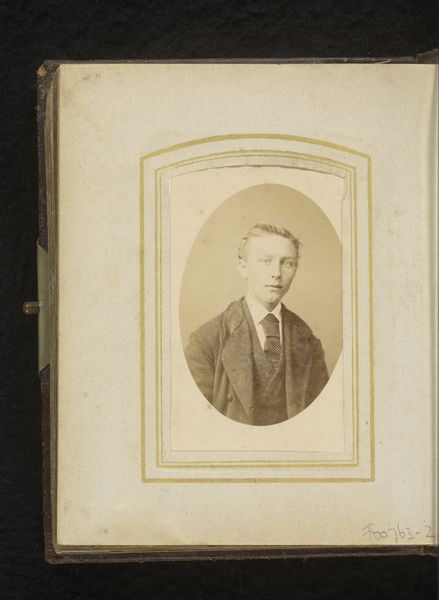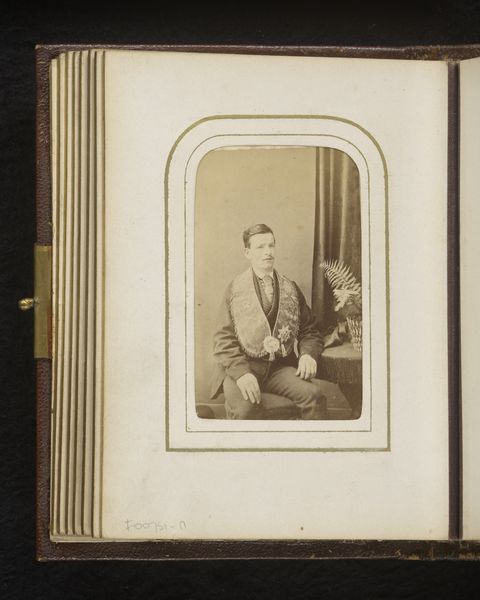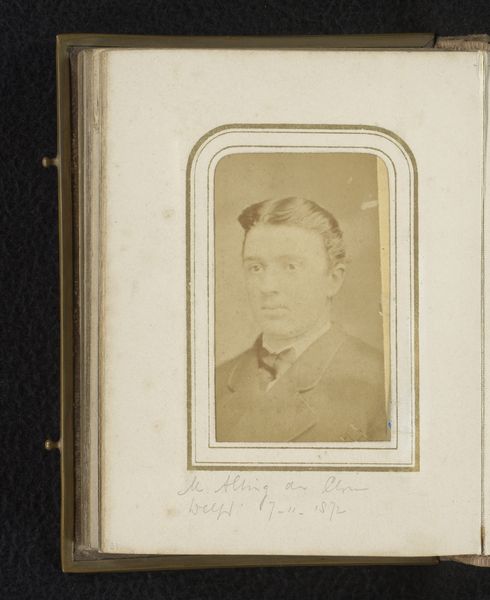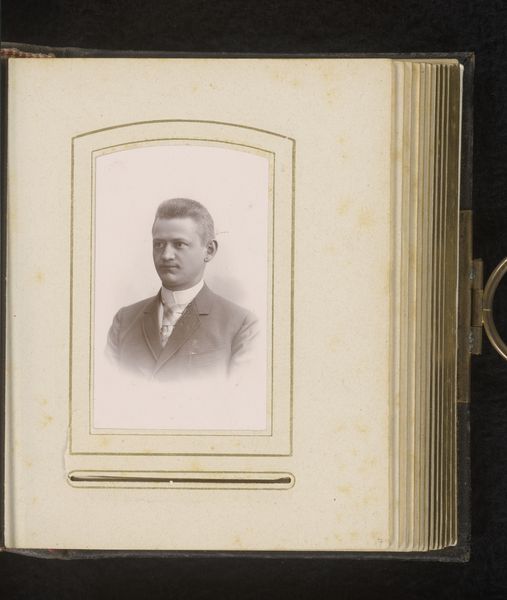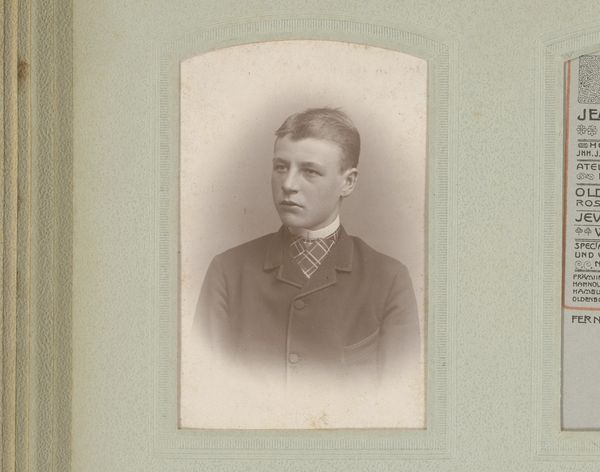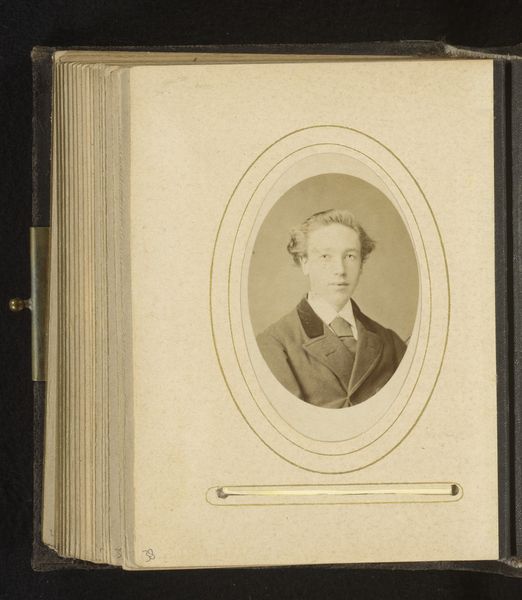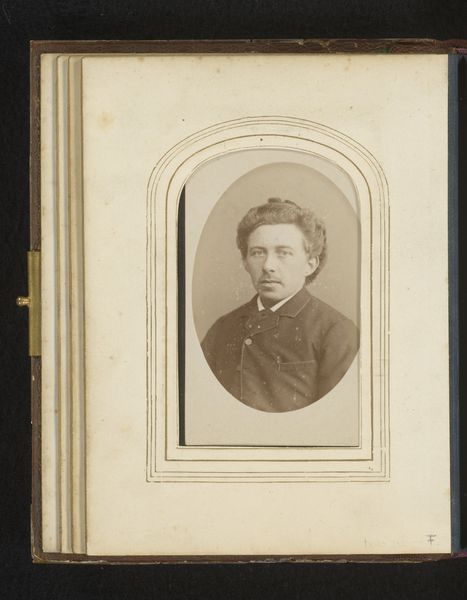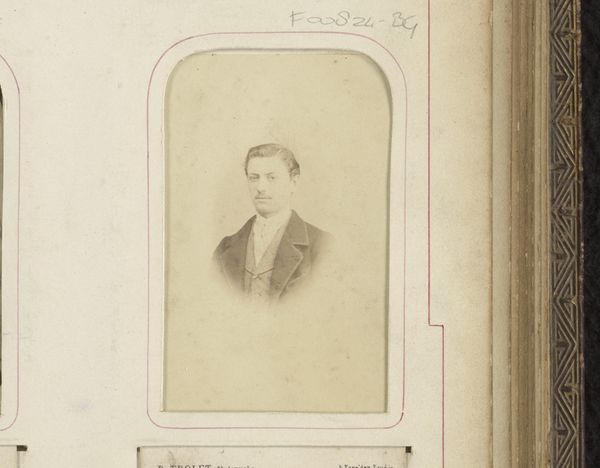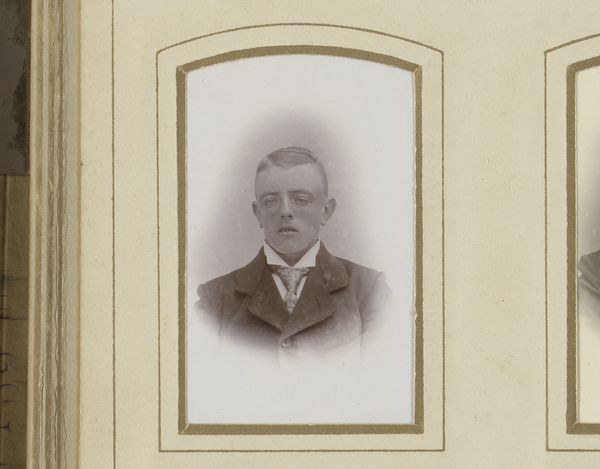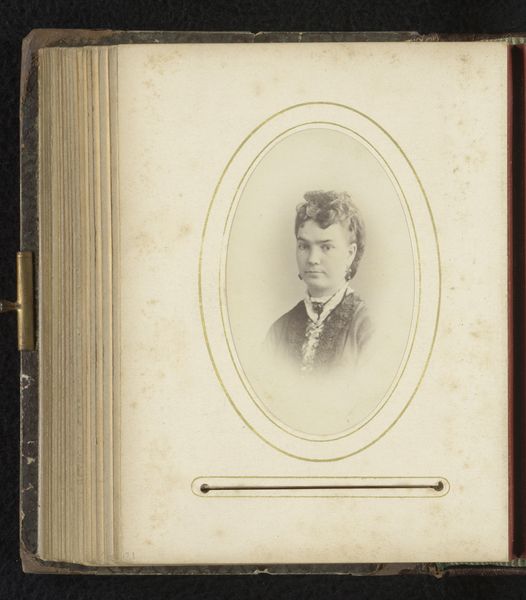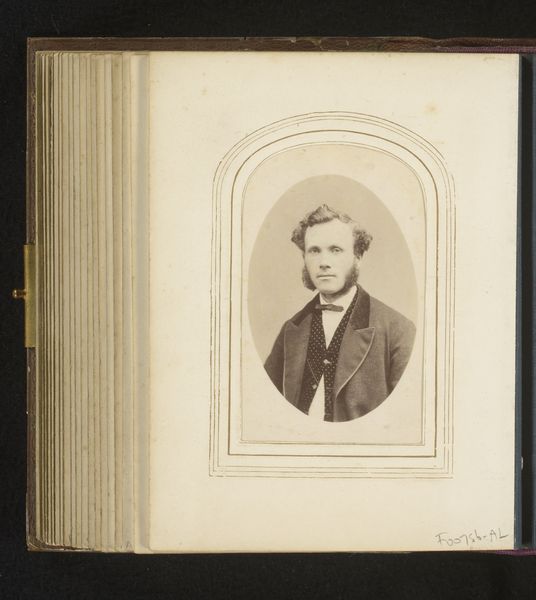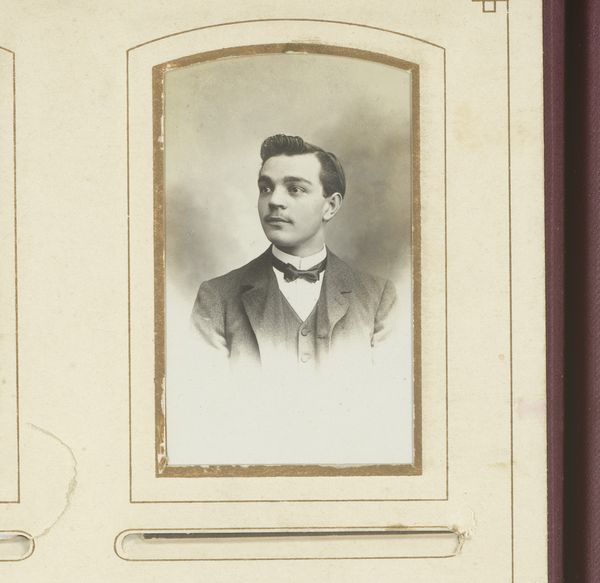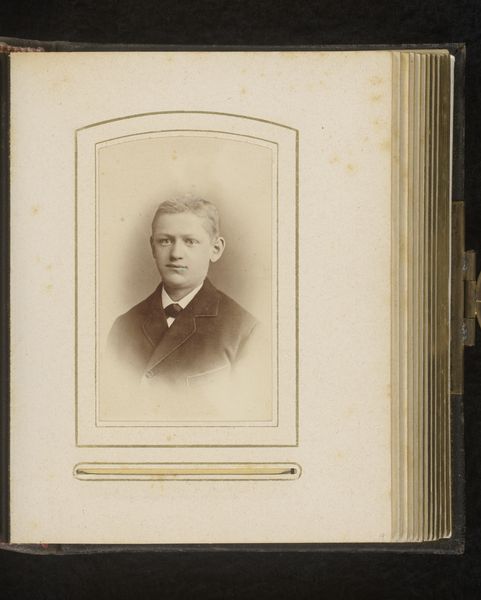
Dimensions: height 86 mm, width 53 mm
Copyright: Rijks Museum: Open Domain
Curator: Here we have an intriguing example of late 19th-century portraiture, titled "Portret van een jonge man," dating approximately between 1856 and 1889. The medium involves an albumen-print or a gelatin-silver-print on paper. Editor: The sepia tone gives it such a wistful aura. The sitter's gaze seems directed both at us and inwardly. I notice the framed oval and how it nestles into the larger rectangular format of the page. Curator: Indeed. Photography in this era served as a vital tool for solidifying middle-class identity. This young man's dress, his suit, the subtle suggestion of status, speak volumes about the aspirational values of the period. What can be assumed about access and privilege with photographic technologies then becoming widely, though not universally, accessible? Editor: Visually, there’s a wonderful play between soft and hard edges. The way the rounded frame emphasizes the gentle curves of the man's face juxtaposed with the angles of the background is particularly effective, drawing my eye right to the sitter's gaze. And observe the graininess— a reminder of photography's chemical process and its own temporality. Curator: Consider too, the likely dynamics of the photographic encounter. He isn’t captured spontaneously, rather his pose and demeanor would have been directed with the sitter attempting to capture and cement something lasting, representative. How does this performance of the self influence contemporary expectations surrounding masculinity and image? Editor: Thinking about photography through a lens of structuralism really draws forth a consideration of its binary codes of realism and representation, illuminating the formal artistic conventions and societal contexts woven into a visual fabric. Curator: Precisely. And through these analyses, hopefully we’ve encouraged a look at photography not just as aesthetic document, but as something far richer— an image imbued with the politics of personhood. Editor: And with it, a heightened appreciation for the photograph’s compositional decisions, its interplay of textures and light—its own mode of visual poetry.
Comments
No comments
Be the first to comment and join the conversation on the ultimate creative platform.
